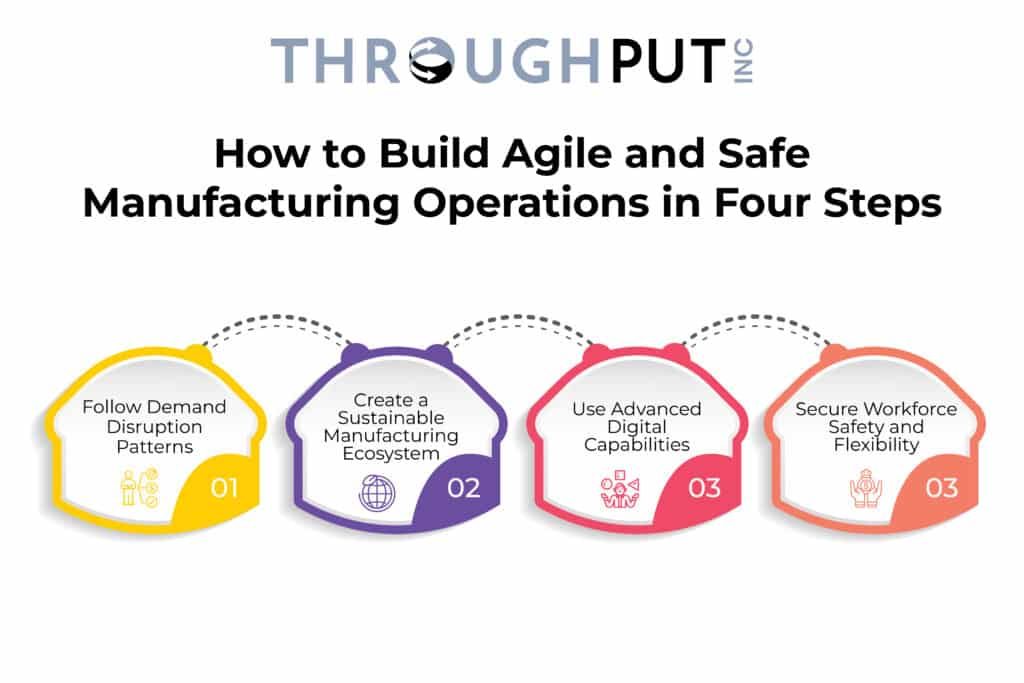Manufacturing Operations 4.0 technologies have emerged as a result of the global COVID-19 pandemic, which can play a vital role in the manufacturers’ ability to remain agile.
A recent survey by the National Association of Manufacturers (NAM) suggests that 80% of manufacturers today expect that the pandemic will have a financial impact on their business.
Today, COVID-19 has disrupted the global supply chain and manufacturing operations management framework on a massive scale. This has challenged manufacturers to instantly assess the impact on their operations and find the best way to respond quickly.
As manufacturers have seen multiple operational, social, and financial consequences, it is forcing them to rethink risk management and contingency plans, workforce safety protocols, and new ways of working opportunities.
Highly volatile demand for certain products has also made them assess the short-term effects on workforces, ecosystem relationships, and network assets.
Managing Operations During a Pandemic
So far, manufacturing operations teams and leaders have concentrated on solving the immediate challenges required to keep the business as stable as possible.
As a result, some of them have formed emergency response teams to gain a better understanding of their production demand changes, labor support challenges, and supply chain ecosystem constraints.
However, in the medium and long term, they would also need to focus on building a business that is as future-proof as possible using new manufacturing 4.0 technology solutions. As a result of this they can build a resilient supply chain, and support workers through the crisis.
They will also be able to sustain a competitive advantage to accelerate operations growth once economies begin to rebound.
Four Actions To Build Agile and Safe Manufacturing Operations:

1. Follow Demand Disruption Patterns
Manufacturers would need to quickly identify those products and services that would impact stabilization and growth, balance the associated supply chains, and reorganize the critical skills that are needed to meet near and long-term demand.
They would need to devise work strategies to collaborate with partners and customers.
This will help to arrive at the market’s actual needs to segment demand for critical products needed for production reprioritization. Also, segmenting key operations depending on market outlook can help decide which product is in high demand, and requires repurposing or re-channeling.
2. Create a Sustainable Manufacturing Ecosystem
The Manufacturing operations ecosystem relationships typically are impacted the most during massive market disruptions, such as a global pandemic.
Manufacturers would need to account for the implications of COVID-19 and the respective contract provisions for each critical ecosystem player, including raw material suppliers, contractor companies, co-manufacturers, and logistics providers.
They would also need to determine if supply price points or delivery lead times have changed and assess whether the extended ecosystem is still viable to meet any new demand/product mixes. Finally, review contracts to determine if any pre-existing obligations need to be changed in light of the current situation.
3. Use Advanced Digital Capabilities
One of the most important aspects of responding to sudden change is to ensure the digital enablement of the manufacturing operations ecosystem.
This can help build manufacturing resilience across a whole range of functions, including demand and supply scenario analysis, labor and skill identification and scheduling, partner ecosystem relationship collaboration, and network analysis.
Manufacturers who deploy digital platforms can easily make use of real-time accessible data and advanced analytical capabilities to make accurate decisions at warp speed. They can, therefore, get more time to react accurately and successfully to COVID-19 disruptions.
Manufacturers who are doing this today, are already witnessing exceptional success by accelerating digital capabilities to envision, design, and implement a holistic digital strategy across the factory floor.
4. Secure Workforce Safety and Flexibility
COVID-19 has resulted in creating significant workforce availability, safety, and productivity challenges. Manufacturers would now need to be prepared with practical solutions to overcome the inefficiencies as a result of this. A decline in productivity and quality along with health and safety concerns at worksites are the most common issues today.
Therefore, it is imperative to have a “worker-first” mindset that uses distancing protocols and unique personal protective equipment requirements for the safety of workers and their families. Also, by developing flexible staffing levels to accommodate production ramp-ups or slowdowns, manufacturers can overcome erratic production demands.
Finally, optimizing crewing schedules and implementing a remote working policy that balances safety and business continuity, can help address the COVID-19 response plan.
The Future of Manufacturing Operations in the Post COVID Era
The COVID-19 pandemic will have long-lasting implications on the future of manufacturing operations. Manufacturers would need to create plans that can sustain long-term responsibility, agility, responsiveness, and resilience for their manufacturing operations.
This means better monitoring of the end-to-end manufacturing operations, to analyze how well placed they are to respond to future disruptions with greater confidence and speed.
It also would need them to re-look at how much transparency and intelligence they have built across all dimensions of the workforce, ecosystem partners, and the physical production network. Manufacturers would need to jointly work towards reshaping themselves into a digitally enabled, resilient, and agile organization that can adapt to unpredictable changes.
Download our latest ebook on “A Comprehensive Guide for Supply Chain Planning”, which can help you plan your Supply Chain Strategy and keep you adequately protected from uncertainties.


